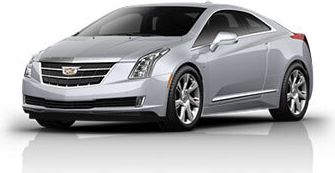Formula 1 represents the zenith of auto racing, combining cutting-edge designs and advanced technology. Have you wondered how such innovations in speed and performance have trickled down into the cars we drive every day? In this exploration, we'll dissect examples of how F1's technology has been integrated into everyday cars.

1. Active Suspension
In 1992, Nigel Mansell's victory in the Formula One world championship was largely attributed to his Williams car's revolutionary suspension technology. This innovation enabled adjustments to the car's height in response to the changing conditions of the track, propelling Mansell to a dominant performance throughout the season. Claiming victory in 9 of the 16 races, Mansell accumulated an impressive 108 points, almost surpassing the combined point total of his two nearest rivals.
2. Hot V Engines
In the 1980s, Ferrari introduced the innovative Hot V engine design, a supercar innovation that has been rigorously tested in high-performance vehicles such as the Mercedes-AMG GT S and Porsche Panamera.
This unique engine layout diverges from conventional designs by orienting the intake ports inward, towards the center of the block, placing the turbocharger at the heart of the engine. Originating from F1 racing technology, the Hot V design offers excitement but also presents complexities. Crafting such an engine requires precision and is typically reserved for elite supercars like those from Lamborghini and Ferrari.
F1 has always included the latest technological advancements and often these are then carried over into everyday cars. You can already launch F1 in the USA, albeit with some reservations, and look at those technologies that have not yet been implemented in mass market cars. As for how to watch F1 in USA - you need a VPN. To unblock streaming services, you can use VPN like VeePN with its thousands of available servers. In this case, you can watch F1 from anywhere on Earth.
3. Telemetry And Sensors
During competitions, Formula 1 teams gather copious amounts of data, scrutinizing elements such as tire pressure and engine heat levels. This meticulous approach to data has spurred the development of sophisticated onboard diagnostics and telematics in everyday vehicles. Today's drivers can monitor their car’s performance metrics, access instantaneous data, and even perform remote diagnostics on their automobiles.
4. Paddle Shifters
Ferrari revolutionized the racing world in the 1989 Formula 1 season by debuting paddle shifters, an idea first imagined in the beginning of the 19th century. This groundbreaking F1 technology featured a pair of paddles behind the steering wheel, connected to an electro-hydraulic mechanism, simplifying the gear-changing process with what's referred to as a semi-automatic gearbox.
The adoption of paddle shifters transcended the racetrack remarkably fast; just eight years later, the technology found its way into Ferrari’s commercial F355 model. In a testament to its widespread impact, today’s automotive market sees this Formula 1-inspired feature as a standard in various vehicles, including compact SUVs and family vans.
5. Carbon Fibre
During the 1980s, McLaren stood at the forefront of innovation in Formula 1 by being the first team to introduce a carbon fibre chassis. Today, the once exclusive carbon fiber material has made its way into mainstream automotive manufacturing. The only caveat is that you need to be careful when ordering carbon parts. It is better to use protection tools, like this extension, and choose trusted manufacturers. There are many fakes and low-quality parts in this segment.
6. Steering Wheels
The concept isn't really about the steering wheels themselves, but rather the intricate controls and systems they incorporate. Since the early 2000s, Formula 1 vehicles have featured advanced, multifunctional steering wheels which empower drivers to adjust a myriad of settings with a mere button press – an innovation that has trickled down into the cars we drive daily.
In recent developments, F1 steering wheels have been engineered with illuminating features that mirror the flags currently signaling on the track. It's conceivable that such race-inspired technology might soon be integrated into consumer vehicles, signaling drivers with visual alerts about traffic lights or road conditions ahead.
7. Hybrid Powertrains
Back in 2007, Formula 1 began exploring new technology very much like what we see in some of our fuel-saving cars today. They started with something called kinetic energy recovery systems. These systems are really smart as they take the energy that's usually lost when you hit the brakes and save it for later.
Fast forward to 2014, and it became a rule that all Formula 1 cars had to have this hybrid tech built-in. It had become pretty advanced by then, with two cool ways of saving power. There's the MGU-K, which is all about saving that braking power like before, and then there's the MGU-H, which takes the hot air from the turbocharger and turns it into energy.
This clever system stores all that saved power (usually in a lithium-ion battery, just like in your laptop or phone) and gives the cars a boost of up to 120kw, which is a lot, for about 33 seconds every lap. It's like having a powerful electric kick that helps them go faster!
Conclusion
F1's cutting-edge technologies, some of which remain staples in today's race cars, are on the brink of revolutionizing our everyday driving experience. Take hydrogen and various sustainable fuels like synthetic and biofuels; they're not just experimental but are powering today's racers. Considering the surge in demand for environmentally conscious energy alternatives, it's a reasonable bet that these innovations will steer their way into the vehicles we drive daily before long.




